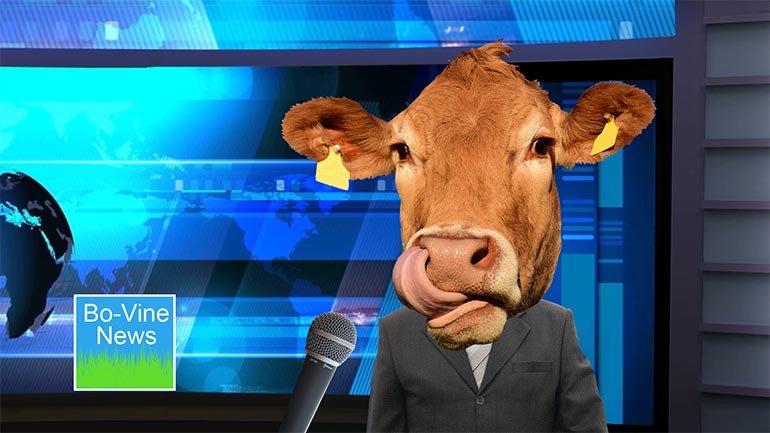ShmoopTube
Where Monty Python meets your 10th grade teacher.
Search Thousands of Shmoop Videos
Cost Accounting Videos 27 videos
What is a Cost: Cost Versus Expense? Cost and expense are pretty similar terms when looking at traditional definitions but they’re a little diffe...
How can unit fixed costs mislead the misled? Unit fixed costs can be misleading because the fixed cost per unit decreases as production increases;...
What is Differential Analysis? Differential analysis is a strategy used to make the best decision. Possible choices are compared to determine which...
Cost Accounting: What is Weighted Average Contribution Margin In Multi-Product Companies? 2 Views
Share It!
Description:
What is Weighted Average Contribution Margin in Multi-Product Companies? Weighted average contribution margin is used as part of a breakeven analysis in companies that make more than one product. It’s used to determine how much the company is making from each product and ultimately how much each product is helping to pay for fixed costs the company has.
Transcript
- 00:00
and finance Allah shmoop weighted average contribution margin in multi
- 00:06
product companies Well you want a company that makes salad
- 00:11
dressings When you started out you had one product a
- 00:13
meat flavored salad dressing for people who want to be
- 00:16
vegan but missed the taste of meat and don't miss
Full Transcript
- 00:19
the guilt At that point it was relatively easy to
- 00:21
attribute costs and margins He only had one product to
- 00:24
worry about Eventually though you expanded You launched a second
- 00:28
product a salad dressing that tastes like meat from endangered
- 00:31
species black rhino twist and giant panda barbecue Mostly Well
- 00:36
don't worry The flavors are all simulated with chemicals No
- 00:39
animals were actually harmed in the making of this video
- 00:42
Okay so figuring out contribution margin becomes more complicated Here
- 00:46
You use a weighted average contribution margin to let you
- 00:49
know which product has the higher margin or contribution to
- 00:52
your profits In any company you have two basic types
- 00:55
of expenses There are expenses that relate directly to your
- 00:57
product You're trying to make light these expenses air known
- 01:00
as cog zor costs of goods sold There are also
- 01:03
expenses that don't apply to a specific product but to
- 01:06
the cost of running the company as a whole Regular
- 01:09
people would call these expenses overhead But just like rappers
- 01:13
and private detectives and old movies accountants have you know
- 01:16
their own lingo They call these expenses S G N
- 01:19
A or sales general and administrative expenses Imagine for a
- 01:23
second that we're back when your company had only one
- 01:26
product You want to figure out how many bottles of
- 01:28
cell addressing you had to sell to reach break even
- 01:30
the cause for the salad dressings A buck fifty per
- 01:33
bottle that covers chemicals that make the meat flavor in
- 01:35
the herbs and spices and the things like the plastic
- 01:38
for the bottle and the printing of the labels and
- 01:40
all That stuff also covers the direct labor that goes
- 01:43
into making the bottles of dressing But you've got all
- 01:45
the overhead stuff you have to cover as well The
- 01:48
rent on your headquarters the advertising budget the CEO's salary
- 01:52
all that stuff All that overhead is DNA in accounting
- 01:55
slang and it adds up to three million bucks a
- 01:58
month You Sela Sela dressing for three dollars a bottle
- 02:00
to retailers so your gross profit or gross contribution per
- 02:04
bottle of dressing is a buck fifty right It cost
- 02:06
you a buck Fifty in *** to make it yourself
- 02:08
for three dollars And you got a buck fifty leftover
- 02:10
Well that buck fifty is known as contribution and its
- 02:13
margin here is fifty percent the amount each bottle contributes
- 02:17
Either too well paying the overhead costs or the bottom
- 02:19
line depending on how many items you're selling here right
- 02:22
So you want to know how many bottles you need
- 02:24
to sell to cover that three million dollars a month
- 02:27
Take three million divided by the buck fifty and that
- 02:29
gets you two million bottles Once you sell two million
- 02:32
bottles you've covered your overhead nut and the gross profit
- 02:35
then start to all fall to the bottom line Okay
- 02:37
simple enough But how about when you move on to
- 02:39
multiple products Those unattached overhead costs then get spread over
- 02:44
additional products so the math gets a lot more complicated
- 02:47
when you try to assign the amounts of overhead So
- 02:49
we enter the weighted average contribution margin Well basically you're
- 02:53
taking multiple products and splitting the overhead across him The
- 02:56
weighted average comes in well because you need to split
- 02:58
the overhead fairly You do so by looking at the
- 03:01
contribution margin for each product and putting it in context
- 03:04
for the sales mix So you launch your second product
- 03:07
You know that salad dressing that tastes like meat from
- 03:09
endangered animals Endangered species flavor sells for four dollars two
- 03:13
customers but cost to twenty five to make So the
- 03:15
contribution It's a buck seventy five It's a more specialized
- 03:18
flavor so you only sell half the volume of the
- 03:21
original flavor If you sell two million bottles of original
- 03:24
flavor to cover you're not well You can expect to
- 03:26
sell only one million bottles of the endangered species New
- 03:30
flavor You'LL earn contribution margin of a dollar fifty per
- 03:33
bottle for the original or three million dollars total Meanwhile
- 03:36
one million bottles of the new flavor will get you
- 03:39
one point seven five million right They sold three million
- 03:42
total bottles of dressing two million of the original self
- 03:45
and one million in the new stuff and you got
- 03:46
four Seventy five or four point seven five million to
- 03:50
apply to the overhead and or to the bottom line
- 03:52
Well four point seven five million divided by three million
- 03:54
bottles gives you a weighted average of approximately a dollar
- 03:58
fifty eight per bottle So how many total bottles and
- 04:01
then need to be He sold the break even including
- 04:02
both the old stuff and the new stuff Well you
- 04:04
still have the three million dollars in overhead The overhead
- 04:06
didn't change weighted average contribution margin of a buck fifty
- 04:09
eight there so you get three million divided by the
- 04:11
dollar Fifty eight gives you about one point eight nine
- 04:13
nine million bottles total to break even And if you're
- 04:16
two to one product mix hold well then you'Ll likely
- 04:18
sell about six hundred thirty three thousand bottles of the
- 04:21
new stuff and about one point two six six million
- 04:24
of the old stuff And that's the target you need
- 04:25
to hit to make up your overhead cough some more
- 04:29
than that number and you start working on product three
- 04:31
A salad dressing that tastes like already extinct animals You
- 04:34
know mammoths and dodos and there's really no accounting for
- 04:38
taste But that's very different video
Related Videos
GED Social Studies 1.1 Civics and Government
What is bankruptcy? Deadbeats who can't pay their bills declare bankruptcy. Either they borrowed too much money, or the business fell apart. They t...
What's a dividend? At will, the board of directors can pay a dividend on common stock. Usually, that payout is some percentage less than 100 of ear...
How are risk and reward related? Take more risk, expect more reward. A lottery ticket might be worth a billion dollars, but if the odds are one in...































